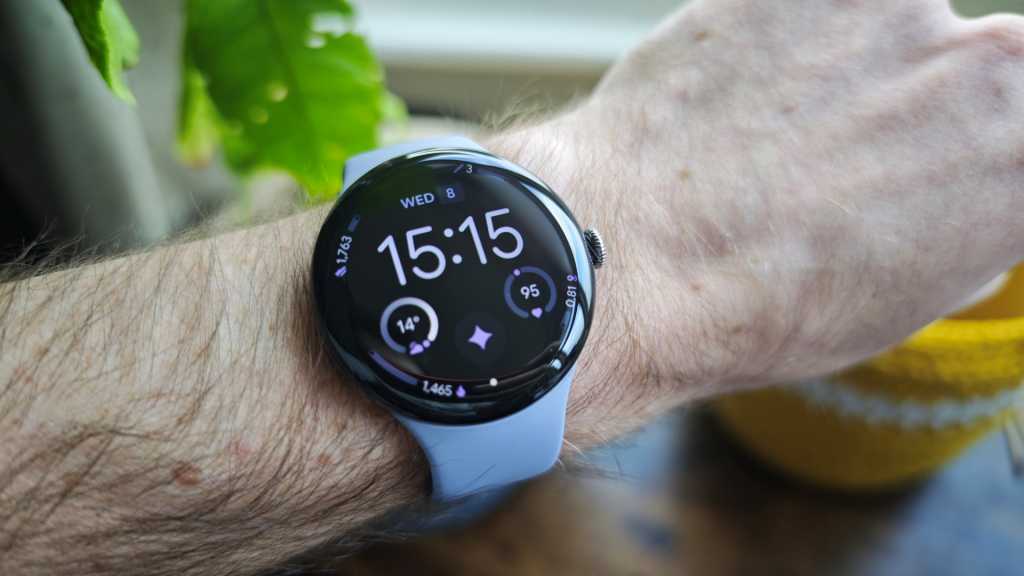It’s been a big year for Google in various ways and on the hardware side, I’ve been testing the Pixel Watch 4. The review embargo has just lifted, but I haven’t tested it thoroughly enough to bring you a full review just yet.
However, in almost a week of testing, I’ve learned some key things about the flagship smartwatch, which will compete with the likes of the Samsung Galaxy Watch 8 and Apple Watch Series 11.
The Pixel Watch 4 goes on sale today from £349/$349 (along with the Pixel 10 Pro Fold), although I’ve been testing the larger and more expensive 45mm size in the new Moonstone colourway.
I love the design. I have since the first generation, and the new domed Actua 360 display is a nice upgrade, but there have been more significant discoveries during my first seven days with the wearable – and they’re not all positive.
Charging is way better
A pet hate of mine when it comes to smartwatches is how so many of them come with proprietary charging solutions. These often involve a little puck that attaches to the back and can be both fiddly and unreliable.
Although I’d like to see all Wear OS smartwatches adopt Qi wireless charging to make life easier (Qualcomm told me it will happen), Google has at least come up with a much better way of charging the Pixel Watch 4.
The device now comes with a little white Quick Charge Dock that you can put on your desk or bedside table. There’s no longer any need to wrestle with an annoying snake-like cable with a circle at the end.

Chris Martin / Foundry
Pop the Pixel Watch 4 in, it snaps into place with magnets (although it’s not branded Pixelsnap to avoid confusing it with Qi2) and two metal contacts take care of charging. Happily, the ones on the watch aren’t the eyesore I feared they might be. I always liked the docking stations that came with early smartwatches such as the Motorola Moto 360 and was annoyed when they weren’t widely adopted.
The system feels more proper and grown-up. Plus, once the smartwatch is docked, you can still make use of it as a little bedside clock. You can see the time as well as other information, such as charging progress.
It’s quick too, getting up to 80% in 30 minutes in my testing. If you want additional docks to place around the house or perhaps at work, you can get them for £29/$29 each.
Gemini on Wear OS is actually useful
In case you hadn’t noticed, AI is creeping (more like storming) into every area of tech and smartwatches are no exception, especially where Google devices are concerned, as Gemini is now one of the top AI platforms available.
It’s replacing Google Assistant on everything and the Pixel Watch 4 is one of the first wearable devices to have it built in as part of Wear OS 6.
With previous Wear OS smartwatches, I didn’t find myself using Google Assistant all that much. I’d use it at first, just to test it out, then I quickly forgot it was even there.
Chris Martin / Foundry
Gemini, however, is far more useful with its responses and although I’m not a keen AI user on other devices, having it on my wrist has proven to be the right use for it.
It’s quicker than consulting my phone, which I’ve often left in another room, so it comes in really handy for quick questions and controlling smart home devices. It even helped me decide on which day to mow the lawn.
I’m still exploring what it can do and it’s by no means perfect. I asked Gemini to change my step count goal (10,000 is just silly for me), but no can do, it says.
The watch also informed me that Gemini can “tell you about your heart rate” but when I ask, it simply brings up the real-time figure as some kind of shortcut and nothing more.
Performance is worrying
The above improvements are great, and there are others I’ll cover in the full review, but none of this is any good without solid underlying performance and this wasn’t something I expected to have a problem with on the Pixel Watch 4.
It’s running on Qualcomm’s latest Snapdragon W5 Gen 2 processor built for wearables and this is the plainest version of Wear OS as it’s a Pixel.
It’s not a huge problem, but after a week, it’s certainly something I’m worried about. Most of the time, the watch runs just fine – scrolling through notifications and menus etc – but stutters, lags and glitches have been far too common for my liking.
After all, this is a flagship smartwatch and if you’re splashing out a minimum of £349/$349, you expect it to run smoothly.
Chris Martin / Foundry
I’m mostly seeing slowdowns when the device has more to load, such as summoning Gemini, opening an app such as Spotify, or the initial swipe to scroll through the Tiles (the widgets on either side of the main watch face). Sometimes this can take a second or two, which feels like an absolute age in 2025.
It can even happen when doing simpler things like the PIN pattern to unlock the watch. I’ve found the software glitchy when it’s in the Quick Charge Dock, too. For example, it can’t decide on the orientation of the screen and sometimes which graphics to show.
I’m really hoping these are just early teething problems that Google can sort with a firmware update. It does happen sometimes when we test devices ahead of launch and it’s one of the reasons I’m not quite ready to publish a full review.
On the whole, I’m impressed with the Pixel Watch 4, but this final caveat could stop it from getting our Editor’s Choice award. Stay tuned for the full review soon.
Link do Autor
